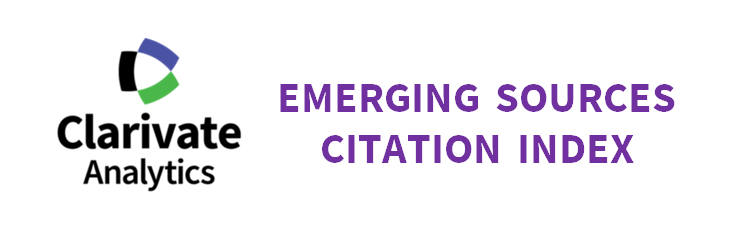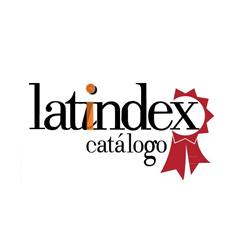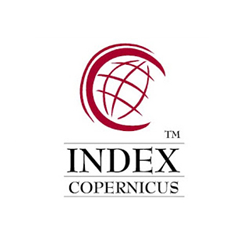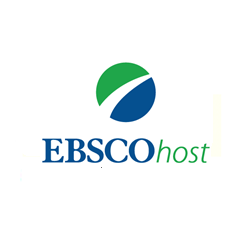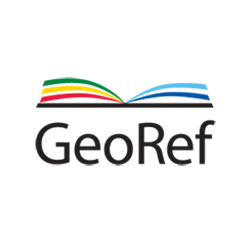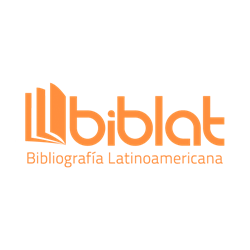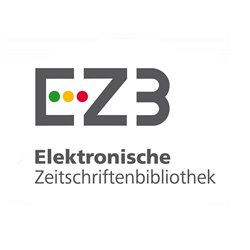Maximizando la Vida Útil de Nodos en Redes de Sensores Inalámbricas: Una aplicación innovadora del problema de Optimización P-Median al Protocolo LEACH-C
DOI:
https://doi.org/10.17981/ingecuc.20.1.2024.09%20Palabras clave:
Clústeres, Eficiencia Energética, Protocolo LEACH-C, P-Mediana, Redes de Sensores Inalámbricos.Resumen
En esta investigación, se explora un enfoque innovador para la optimización de clústeres en el protocolo LEACH-C a través de la aplicación del modelo P-Median en Redes de Sensores Inalámbricos (WSN). Utilizando un número fijo de sensores, el método se centra en mejorar la eficiencia energética, crucial para la sostenibilidad y reducción de costos en WSN. La implementación del modelo P-Median demostró ser eficaz en retrasar la muerte del primer nodo y reducir el número de clústeres y paquetes enviados a las cabezas de clúster (CH), al tiempo que aumentó los paquetes enviados al sumidero y la energía promedio de la red.
Estos avances significan una mejora considerable en la eficiencia energética, contribuyendo a la sostenibilidad a largo plazo y disminuyendo los costes operativos y de mantenimiento. Más allá de las mejoras energéticas, este estudio tiene el potencial de revolucionar la gestión de recursos e infraestructuras, especialmente en áreas remotas, al ofrecer una metodología adaptable a diferentes configuraciones de WSN. Los resultados abren un camino prometedor hacia la optimización en el campo de las WSN, destacando la utilidad del modelo P-Median para mejorar tanto el rendimiento como la eficiencia energética en estas redes, lo que representa un avance significativo con aplicaciones potenciales amplias para futuras investigaciones y desarrollos tecnológicos.
Descargas
Citas
D. Kandris, E. A. Evangelakos, D. Rountos, G. Tselikis, and E. Anas- tasiadis, “LEACH-based hierarchical energy efficient routing in wireless sensor networks,” AEU - International Journal of Electronics and Communications, vol. 169, p. 154758, 9 2023.
W. B. Heinzelman, A. P. Chandrakasan, and H. Balakrishnan, “An application-specific protocol architecture for wireless microsensor net- works,” IEEE Transactions on Wireless Communications, vol. 1, no. 4, pp. 660–670, 2002.
F. Ye, X. Zhou, Z. Ren, and S. Yang, “Energy Allocation for Stochastic Event Detection in Rechargeable Sensor Networks,” Information Tech- nology and Control, vol. 51, no. 2, pp. 283–293, 6 2022.
Q. Zhang and Y. Liu, “An energy cooperation method of wireless sensor networks based on partially observable Markov decision processes,” Sustainable Energy Technologies and Assessments, vol. 55, 2 2023.
D. M. Satyavathi and A. C. Sudhir, “OQ-IICA: Optimal QoS-aware intra-inter cluster data aggregation technique for IoT-assisted WSNs using hybrid optimization techniques,” Concurrency and Computation: Practice and Experience, 2023.
D. K. J. Bahadur and L. Lakshmanan, “A novel method for optimizing energy consumption in wireless sensor network using genetic algorithm,” Microprocessors and Microsystems, vol. 96, 2 2023.
D. Hemanand, C. Senthilkumar, O. S. Saleh, B. Muthuraj, A. Anand, and
V. Velmurugan, “Analysis of power optimization and enhanced routing protocols for wireless sensor networks,” Measurement: Sensors, vol. 25, 2 2023.
A. Srivastava and P. K. Mishra, “Load-Balanced Cluster Head Selection Enhancing Network Lifetime in WSN Using Hybrid Approach for IoT Applications,” Journal of Sensors, vol. 2023, 2023.
H. A. Younus and C. Koçak, “Optimized Routing by Combining Grey Wolf and Dragonfly Optimization for Energy Efficiency in Wireless Sensor Networks,” Applied Sciences (Switzerland), vol. 12, no. 21, 11 2022.
F. K. A.B, “ECO-LEACH: A Blockchain-Based Distributed Routing Protocol for Energy-Efficient Wireless Sensor Networks,” Information Dynamics and Applications, vol. 2, no. 1, pp. 1–7, 3 2023.
C. P. Verma, “Enhancing Parameters of LEACH Protocol for Efficient Routing in Wireless Sensor Networks,” Journal of Computers, Mechan- ical and Management, vol. 2, no. 1, pp. 26–31, 2 2023.
M. Preetha, N. A. Kumar, K. Elavarasi, T. Vignesh, and V. Nagaraju, “A Hybrid Clustering Approach Based Q-Leach in TDMA to Optimize QOS-Parameters,” Wireless Personal Communications, vol. 123, no. 2, pp. 1169–1200, 3 2022.
S. Sennan, Kirubasri, Y. Alotaibi, D. Pandey, and S. Alghamdi, “EACR- LEACH: Energy-Aware Cluster-based Routing Protocol for WSN Based IoT,” Computers, Materials and Continua, vol. 72, no. 2, pp. 2159–2174, 2022.
I. Daanoune and A. Baghdad, “IBRE-LEACH: Improving the Perfor- mance of the BRE-LEACH for Wireless Sensor Networks,” Wireless Personal Communications, vol. 126, no. 4, pp. 3495–3513, 10 2022.
V. Rajpoot, L. Garg, M. Z. Alam, Sangeeta, V. Parashar, P. Tapashetti, and T. Arjariya, “Analysis of machine learning based LEACH robust routing in the Edge Computing systems,” Computers and Electrical Engineering, vol. 96, 12 2021.
A. K. Dwivedi and A. K. Sharma, “EE-LEACH: Energy Enhancement in LEACH using Fuzzy Logic for Homogeneous WSN,” Wireless Personal Communications, vol. 120, no. 4, pp. 3035–3055, 10 2021.
H. Chaudhary and V. Kumar, “Performance Analysis of LEACH-C and EAMMH protocols in WSN in MATLAB,” in Proceedings - 2021 3rd International Conference on Advances in Computing, Communication Control and Networking, ICAC3N 2021. Institute of Electrical and Electronics Engineers Inc., 2021, pp. 1367–1370.
I. Daanoune, A. Baghdad, and A. Ballouk, “Improved LEACH protocol for increasing the lifetime of WSNs,” International Journal of Electrical and Computer Engineering, vol. 11, no. 4, pp. 3106–3113, 8 2021.
R. Sinde, F. Begum, K. Njau, and S. Kaijage, “Lifetime improved WSN using enhanced-LEACH and angle sector-based energy-aware TDMA scheduling,” Cogent Engineering, vol. 7, no. 1, 1 2020.
“Genetic algorithm based optimized leach protocol for energy efficient wireless sensor networks,” Journal of Ambient Intelligence and Human- ized Computing, vol. 11, no. 3, pp. 1281–1288, 3 2020.
R. Gantassi, B. B. Gouissem, and J. B. Othmen, “Routing protocol LEACH-K using K-means algorithm in wireless sensor network,” Web, Artificial Intelligence and Network Applications: Proceedings of the Workshops of the 34th International Conference on Advanced Informa- tion Networking and Applications (WAINA-2020), pp. 299–309, 2020.
P. Gou, F. Li, Z. Li, and X. Jia, “Improved LEACH protocol based on efficient clustering in wireless sensor networks,” Journal of Computa- tional Methods in Sciences and Engineering, vol. 19, no. 3, pp. 827–838, 2019.
X. Cai, Y. Sun, Z. Cui, W. Zhang, and J. Chen, “Optimal leach protocol with improved bat algorithm in wireless sensor networks,” KSII Transactions on Internet and Information Systems, vol. 13, no. 5, pp. 2469–2490, 5 2019.
H. Liang, S. Yang, L. Li, and J. Gao, “Research on routing optimization of WSNs based on improved LEACH protocol,” Eurasip Journal on Wireless Communications and Networking, vol. 2019, no. 1, 12 2019.
P. Ullas and K. S. Shivaprakasha, “Smart clustering leach (Sc-leach) pro- tocol for improved network survivability in wireless sensor networks,” International Journal of Recent Technology and Engineering, vol. 8, no. 2, pp. 6106–6110, 7 2019.
C. S. ReVelle, H. A. Eiselt, and M. S. Daskin, “A bibliography for some fundamental problem categories in discrete location science,” European Journal of Operational Research, vol. 184, no. 3, pp. 817–848, 2008. [Online]. Available: https://doi.org/10.1016/j.ejor.2006.12.044
C. Boonmee, M. Arimura, and T. Asada, “Facility location optimization model for emergency humanitarian logistics,” International Journal of Disaster Risk Reduction, vol. 24, pp. 485–498, 9 2017.
A. Zattas, “LEACH,” 2023, MATLAB Central File Exchange. [Online]. Available: https://www.mathworks.com/matlabcentral/fileexchange/66 574-leach
R. C. Team, “R: A Language and Environment for Statistical Comput- ing,” Vienna, Austria, 2021.
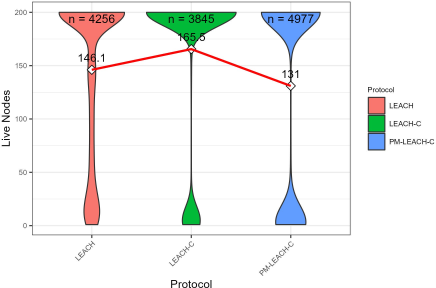
Descargas
Publicado
Cómo citar
Número
Sección
Licencia
Derechos de autor 2024 Inge Cuc

Esta obra está bajo una licencia internacional Creative Commons Atribución-NoComercial-SinDerivadas 4.0.
Los artículos publicados son de exclusiva responsabilidad de sus autores y no reflejan necesariamente las opiniones del comité editorial.
La Revista INGE CUC respeta los derechos morales de sus autores, los cuales ceden al comité editorial los derechos patrimoniales del material publicado. A su vez, los autores informan que el presente trabajo es inédito y no ha sido publicado anteriormente.
Todos los artículos están bajo una Licencia Creative Commons Atribución-NoComercial-SinDerivadas 4.0 Internacional.


 English
English
 Español (España)
Español (España)
